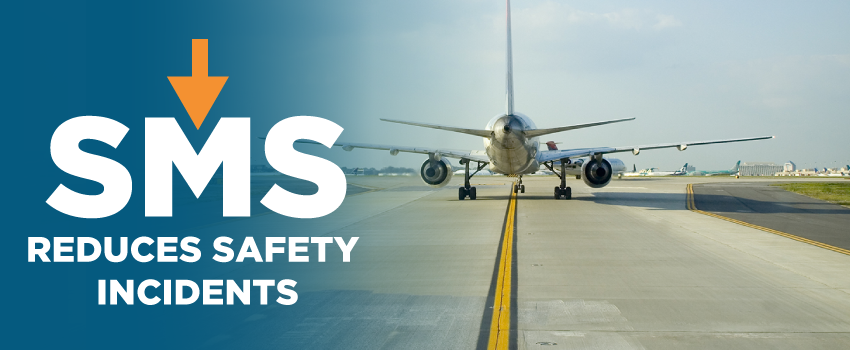Applying a good safety management software solution in an airline is a proven way of reducing the annual number of safety events. The safest airlines in the world recognise that safety management software is a huge support for their safety management approach in a number of different ways, including accessibility, mobility, usability and data categorisation. However, there are four specific areas where the right software support helps to improve the safety environment:
- Identifying latent issues
- Supporting employee safety submissions
- Intuitive safety software for users
- Data collection and analysis
The use of a suitable safety management software is now a necessity. The number of serious incidents and accidents is relatively low. Because of this, it's actually quite difficult to conduct viable trend analysis due to the small data sample. However, there remains a high number of less serious events that can be assessed and analysed to provide meaningful insights into how the business is performing from a safety standpoint. These minor safety events often act as leading indicators of more insidious issues.
An integrated safety management software provides an airline with access to both immediate and potentially underlying safety management issues. Read the article to learn more about the four areas that can benefit from software support in more detail:
1. Identifying Latent Issues
Underlying safety problems, often known as ‘Latent Issues’, act rather like a bug in a piece of software. They are unknown and only activated when certain, triggering conditions are met; often with serious repercussions. Unless suitable software packages are used, it is unlikely that such issues will ever be noted until they manifest as a serious incident or accident. Management will be able to address latent issues more effectively when they are presented with reports and trends derived from data taken from safety management system software.
2. Supporting Employee Safety Submissions
The more safety reports that are submitted the more likely it is that safety issues are identified and rectified. Airline employees are the personnel on the front line of the business and it is most important that they are encouraged to submit hazard / safety reports no matter how trivial the subject matter might seem. Part of this encouragement process is the provision of accessible and intuitive reporting software.
3. Intuitive Safety Software
Well designed and supported software has the effect of encouraging and supporting safety submissions which in turn ensures that there is an easy identification of actions that need to be taken to reduce or indeed curtail the issue. Assisting this, safety software should include reporter feedback processes, report monitoring and appropriate workflow so that the right people in an airline organisation get to see the report.

Additional features should include, but are not limited to:
- Offline and Online report synchronisation via desktop and tablet format
- Auto-population of appropriate entries
- Pop-up help dialogue boxes
- Inability to submit until complete
- Extensive use of drop-down boxes
- Auto-suggestion for critical entries such as event descriptors
All of these features improve voluntary reporting and only by using a good software package will reporting increase. Additionally, reporting is achieved in practically real time and, for serious events, management action can be initiated without undue delay.
An improved reporting culture will help safety managers to identify emerging trends and hopefully take remedial action in a proactive manner, thus, reducing incident rates.
4. Data Collection and Analysis
Just gathering numerous safety reports in isolation will only address part of the problem. It is often quoted that airlines are data rich but information poor. This statement is driven by the result of poorly implemented software that fails to address the important areas of secure storage and data retrieval. Once retrieved, safety data must be formatted such that responsible managers can manipulate it and drill down into the event groupings to determine any trends or issues. Only a well-designed software package can provide this functionality.
A well-designed software can help you reduce your exposure to the risk of serious incidents and accidents by:
- Improved safety and reporting culture
- Real time capture of safety reports
- Easy data retrieval and intuitive presentation that allows for in depth analysis and drill down
- Becoming more proactive when identifying emerging trends / safety issues, especially those latent issues that might otherwise go unnoticed
- Improved communication between stakeholders, post-holders and employees
Safety Management Software Can Help Your Airline
While software alone will never provide a complete solution and it should be thought of as an enabler for your already implemented safety management system, without a suitable, well-designed package, any organisation will struggle to keep pace with the rapidly changing regulatory landscape. Additionally, it may be exposing itself to unnecessary risk in terms of early identification of latent issues that could result in a more serious event.
Learn how the right safety management software can help support your airline’s safety investigation, risk and audit management and compliance solutions. Download our free guide to find out how to select one that benefits your airline.
Image by Lindenblade (DreamsTime)

